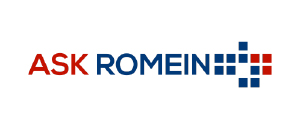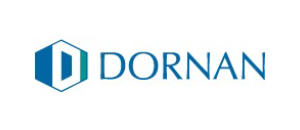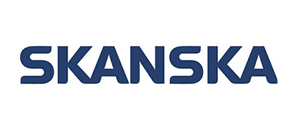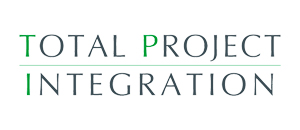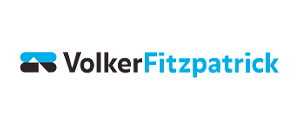Often stereotyped as an industry that is slow to adapt to change, the future of construction is a highly-debated topic within the sector. In the contemporary sphere of commerce and technology, new capabilities and processes are continually emerging, resulting in a world where businesses must embrace disruptive change in order to survive.
A recent study by management consultancy firm McKinsey found that on average, large-scale construction projects across the UK take around 20% longer to be completed than is scheduled and are typically over budget by an average of 80%. The research also discovered that since the 1990s, productivity has in fact declined in some construction disciplines, resulting in low and often volatile financial returns. It is clear that the construction industry is ripe for change with great opportunities ahead to ensure it is more productive and efficient.
We currently sit in the midst of the fourth industrial revolution, a convergence of physical, digital and biological developments, which is poised to enhance and shape businesses in order to meet the evolving demands of commerce. In order to push the boundaries, shake off the tired stereotypes and move the industry forward, construction as a sector must not only adapt to the incoming digital insurgency, but embrace it. There are various technologies available to facilitate this, with many more in the pipeline. It is vital construction companies adopt these with a positive mindset to overcome some of the issues the industry is facing.
The Digitalisation Solution
A recent report by the National Building Specification (NBS) revealed that the construction industry hosts disproportionate disputes, with around 33% of workers reporting at least one major operational disagreement in the preceding 12 months. The abundance of conflict is often due to a lack of a collaborative approach to project development. Engineers, clients and peripheral stakeholders involved in a project must collaborate to increase productivity and efficiency, to ultimately achieve successful completion. Collaboration technologies such as cloud functionality and team workplaces like Office 365 enable free flow of communication and compliance, making operational necessities simple and achievable. Paperless methodology can change the way a business works and futureproof the sector against uncertainty and change.
The Speed of Change
Another contemporary issue facing businesses within the built environment is reduced productivity as a result of its general reluctance to embrace change. The last 30 years have seen a significant uplift in operational efficiency in a range of sectors such as retail, hospitality and healthcare. For example, businesses which once appeared as brick and mortar shops or megastores now reside online, utilising global supply chains, minimal overheads and same-day delivery logistics to achieve success. Across the industries that have improved, there is a common theme, digitalisation. Compare these rapid advances to those found in the construction industry and the discrepancy becomes apparent. The construction sector averages only a 1% increase in productivity year-on-year and hasn’t fully embraced the digital revolution.
In one sense, this can be attributed to the lack of skilled workers in the sector, a concern which, with Brexit on the horizon, is predicted to become more pressing in the coming years. Inevitably, as a result, the industry will require new methods of thinking, working and upskilling in order to progress and keep attracting new blood to the profession. A study by construction consultancy Mace predicts that around 600,000 jobs could potentially be replaced by automation technology within the next several decades. This shift in the workforce will ultimately depend on the current cohort learning new skills through online courses and adaptive learning as the sector moves towards Industry 4.0 principles. The same report also predicts that this change in approach could inject an additional £25bn a year into the economy and transform the future outlook of construction, which leaves the scenario in a state of uncertainty.
While these two issues predominantly affect the construction industry itself, another affects both the sector and the environment, emissions. The built environment is responsible for almost 32% of global energy consumption and is one of the most significant contributors to the rise in global temperatures. The built environment has enormous potential for substantial energy savings with some buildings already operating on zero-emission power, including the zero-bills house at the BRE Innovation Park. This has led to a focus on efficient and sustainable solutions in architecture. The Internet of Things (IoT) is tipped to enhance the industry’s sustainability efforts via smart devices and enhanced connectivity, which can create greener, zero-carbon sites that are fully optimised and adaptable.
Health and safety is also a focal point for improvement as the industry moves forward. While most diligent companies possess exemplary records and incidents are rare, those that do have accidents on-site tend to find themselves in the headlines, so it is essential that companies work hard to mitigate risks. Once a business reduces the potential for incidents, the workforce is given more agency, and is encouraged to work remotely and adeptly. This can be achieved via solutions such as online site induction software, training and competence software, and risk, incident and hazard analytics which can advise on the best approaches.
Additional software, such as cloud-based safety portals have also enabled simple and efficient compliancy. Southalls Safety Cloud, for example, is a web-based multi-site health and safety resource that uses checklist formatting to make meeting modern safety demands quick and efficient, even across multiple geographies. The system is not designed to replace a health and safety department, but rather to pull all their existing workflows into one central operation.
Another influential digital technology starting to be embraced by the industry is the use of drones. No longer the reserve of defence organisations and tech-savvy consumers, drones are set to have a significant impact on the built environment, mitigating risk and assisting surveyors to complete their jobs in a shorter timeframe. Global market forecasts currently value drones as a business service at $127 billion and the opportunity to develop this technology further for commercial use is clear. The devices can be used to survey complex structures in a fraction of the time of humans, and remove the need for scaffolding, which can itself present a number of additional safety considerations. While the construction industry often lags behind in terms of technological progress and adoption of new operational methodologies, the complexity of the work it produces, in ever-evolving regulatory conditions, means it has some of the greatest potential to become an innovative and forward-thinking sector that sets the standard for others. The possibilities for optimal efficiency and sustainability are endless. There is also scope for significant mitigation of health and safety hazards, which makes this is an exciting time for the industry. As automation and digitalisation are further implemented into commercial processes and the technology continues to develop, the construction sector is perfectly positioned to embrace change and capitalise on the new efficiencies that are brought to the table.
